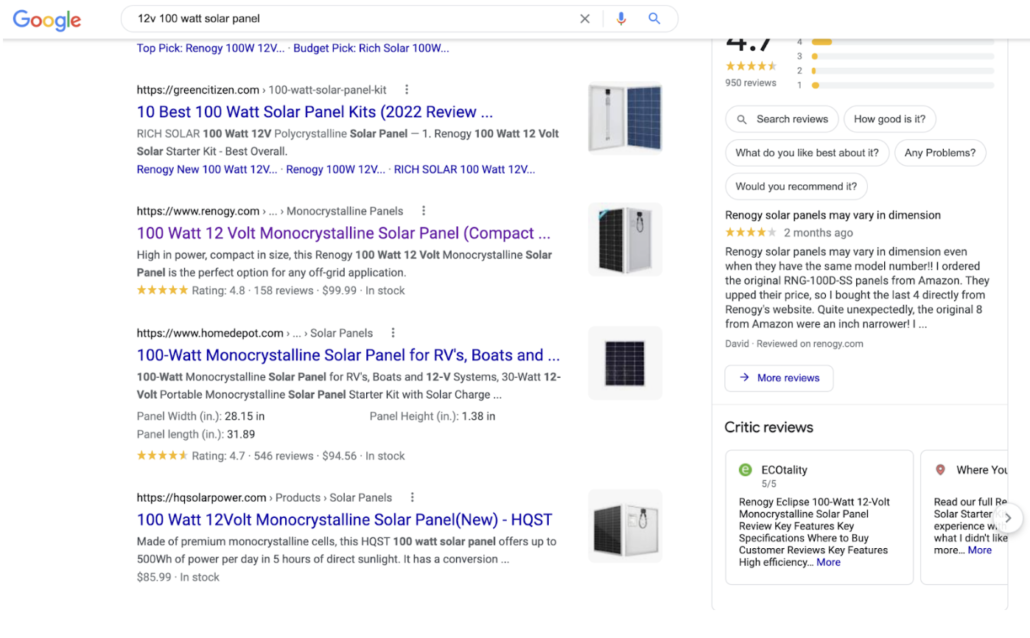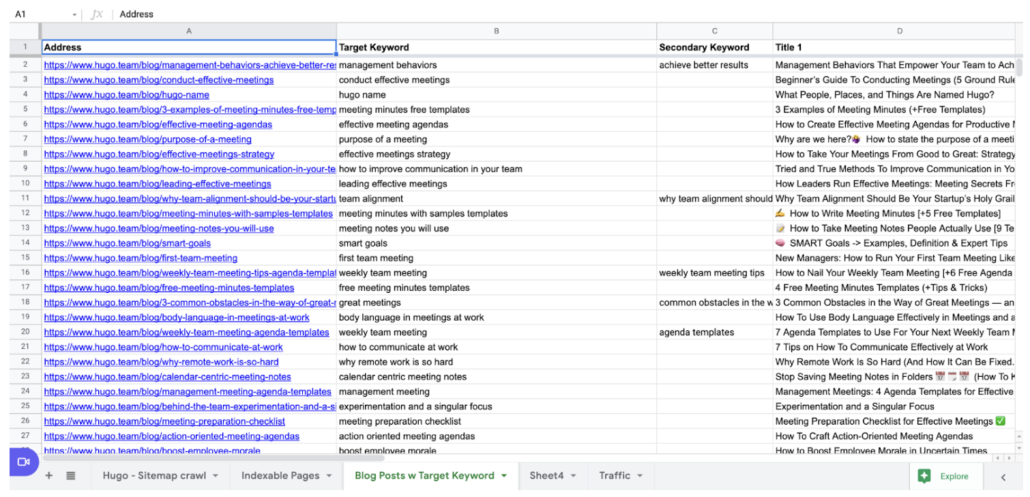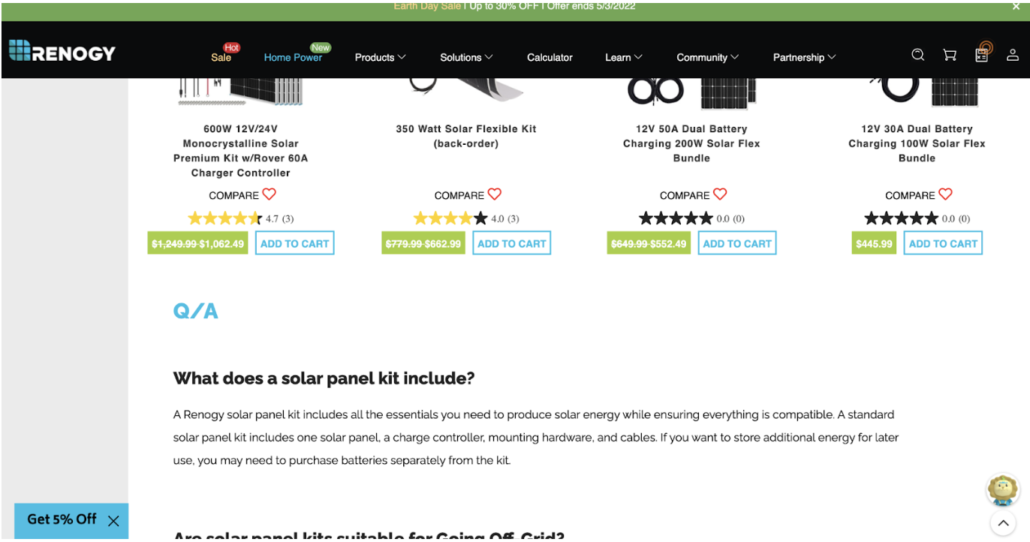How to Develop an Effective Ecommerce SEO Strategy in 2022
It’s 2022, and the world has changed.
Some things haven’t—like the fact that the number of active internet users worldwide is rapidly growing towards 5 billion and that 30% of global web usage comes from people using search engines to find something they want or need.
But other things have—most notably, how those searches are made, have.
With a market that becomes more competitive every day, you need to have a solid SEO strategy to ensure your eCommerce store can stay afloat. But with so many different approaches and techniques out there, how can you decide which is best for your business?
The good news is that although eCommerce SEO can be challenging, it’s not impossible, and as a growth agency, we’ve learned a few things that can be helpful for you. Here are some significant steps to help you get started with your eCommerce SEO strategy today.
When building your SEO strategy, you always want to begin with either keyword research or technical SEO. In this case, we’ll begin with keyword research.
Keyword research
Keyword research is the most fundamental step in any SEO strategy. To start, you’ll want to use a tool like SEMrush to find out which keywords you should be targeting. You probably already have a few in mind but by researching your top-performing keywords and pages, you will get insights into which keywords are performing well and it will help you narrow down your list of keywords to the 5-10 most important keywords.
When doing keyword research, you’ll want to look at the monthly organic traffic of non-branded search terms, the keyword difficulty, and the searcher intent first.
These metrics will help you narrow down to your 5-10 most critical target keywords for your eCommerce store. These are the ones that:
- have a high search volume, but aren’t too broad
- are relevant to your business – look at the search results
- have low competition (low keyword difficulty, first page results have low domain authority).
Doing a quick Google search is the quickest way to determine searcher intent for a keyword. If the top-10 results are unrelated to your business, even though you think the keyword is a great fit, then it’s not a keyword that you want to spend time trying to rank for.
Note that for eCommerce sites, transactional queries tend to be more critical than informational ones because they drive a higher conversion rate and should be weighted when comparing keywords.
Technical SEO
Technical SEO is the foundational building block of SEO and should be the first step in any eCommerce SEO strategy.
It entails:
- Running an SEO audit of your existing website;
- Creating a plan to fix any technical issues, and
- Implementing technical SEO fixes before adding additional content to your website.
The last thing an agency wants to do is invest resources into content creation to find out the site isn’t even crawlable or has major accessibility issues that kill the user experience.
Another technical SEO implementation to be aware of for eCommerce websites is making sure you’re adding structured data schema to your product pages. By adding the appropriate structured data to your product pages, you can display your price, ratings, and product image directly in Google’s SERP and increase your CTR.
If you spend time now making sure your site is healthy from an SEO standpoint, it will be easier (and cheaper) to make on-page SEO changes as needed in the future.
Optimize Site architecture
Ecommerce site architecture will help your users find the information they need while also helping Google find and index your pages.
Look at your navigation structure and make sure it makes sense. Do all categories, subcategories, and products have a logical flow? Will you be adding pages in the future and will they fit into the existing site structure?
To optimize your site architecture:
- Ensure your categories are easy to navigate and link to the correct pages.
- Avoid duplicate content
- Make sure breadcrumbs are in place – breadcrumbs (a navigational feature showing the user’s location within a website) help users navigate your site, especially if they get lost along the way.
- Use SEO-optimized page titles – Page titles are like a newspaper headline; they tell the reader (and Google) what the page is about.
- Create internal links between relevant categories, products, and landing pages.
- Focus on user experience by adding necessary filters, tags, or search bars to help users navigate through your website easier.
On-page SEO
If you don’t have the right on-page SEO strategies in place, the chances of your products or services ranking highly in search results are less likely.
Keyword Mapping
The first step of on-page SEO is keyword mapping, making sure each page has a unique target keyword and that the target keyword is relevant. Learn how keyword mapping helped us increase Salam’s organic traffic by 117% in 90 days.
One of the first things to look for during keyword mapping, if you haven’t already during technical SEO, is to find pages that shouldn’t be indexed in Google. It’s important that you’re only indexing pages that have an SEO value to them and benefit your users.
You can build a keyword mapping spreadsheet by crawling your website with ScreamingFrog and exporting all data to a spreadsheet. From there, you can either determine the target keyword of each URL by analyzing the data in the URL and title or you can export all target keywords from Yoast if you’re using Yoast Premium on WordPress.
Once you have a unique target keyword for each page then ensure they are included in the title tag, meta description, and H1 tag of that page.
Once you’ve done this, it’s essential to optimize your product pages by adding internal links from other pages within your site that contain relevant content.
Ecommerce SEO Content
A specific eCommerce SEO strategy is adding SEO-optimized content at the bottom of all of your product listing pages. This is a strategy that is widely used by the eCommerce behemoths and has worked very well for our clients. By adding this content at the bottom of your page, it doesn’t interfere with the user experience, helps improve page ranking, and provides useful information for your customers.
Internal linking
Internal linking helps users navigate and find more relevant content on your site while also helping search engines figure out what pages are most important.
Here are some best practices for internal linking:
- Start with a sitemap. The first step to effective internal linking is creating a sitemap that lists all the essential pages of your website. This is not only good for internal linking but also for crawlability.
- Always display “Products You May Like” or something similar on the individual product pages to help improve internal linking and user experience.
- Make sure every page has at least 2 or 3 internal links pointing to it. This ensures that every page on your site gets some love from Google and visitors alike.
- Link only relevant pages together. Don’t link one article to another just because you want to link to it somewhere—make sure it’s relevant or valuable to the person reading the content.
- Use SEO-optimized anchor text when linking pages.
Focus on high-converting and high-ticket items
As a general rule, high-search-volume keywords will be more competitive. You can still rank for them, but it’ll take more effort and resources than ranking for low-volume keywords.
The problem with this scenario is that you’re focusing on eCommerce SEO without defining the problem you’re trying to solve beforehand.
Instead of optimizing for high-volume search terms because someone told you to, defining goals and KPIs is much more effective before beginning an eCommerce SEO strategy. This is something that you will decide when you’re doing your keyword research and narrowing down on your 5-10 most important keywords.
Determining which specific products generate the highest revenue makes it easier to pinpoint the most valuable pages on your store.
It is recommended to look at monthly revenue per product if you have hundreds or thousands of products. If you have fewer than 100 products, you could look at quarterly or annual data instead.
If you have low-performing pages that are ranking well, try to find other ways to take advantage of that traffic by adding related products to the page.
Conversion Rate Optimization
Every extra conversion you make increases your revenue, which means that CRO has a real and direct impact on your company’s bottom line.
eCommerce marketers optimize for CRO in parallel with SEO to provide a seamless experience for your customers from landing on your website, reading your content, and taking that desired action.
It’s all about understanding how users behave on your website and making changes to improve that behavior. And, it’s not just about improving conversion rates; You can also use CRO techniques to reduce bounce rates, increase time on page and enhance visitor engagement.
The main aim of CRO is to create an experience for your customers that will encourage them to complete their purchase or other desired action on your website.
Conclusion
There you have it—a fully-formed eCommerce SEO strategy that you can use to tackle the rest of 2022 and beyond. You’ve got the tools and the knowledge, and now you just need to get started.
When it comes to developing a successful eCommerce SEO strategy, the key is to understand your customers and what they’re looking for.
If you can consistently provide the best products and answers to your customers’ questions, you’ll be able to build a strong eCommerce business over time.

Derek is a digital marketer based in Boston, Massachusetts with almost a decade of hands-on SEO experience. He finds it meaningful, challenging, and exciting to develop, test, and implement new SEO strategies. When he’s not auditing websites and optimizing content he’s usually backpacking and exploring new cultures.









